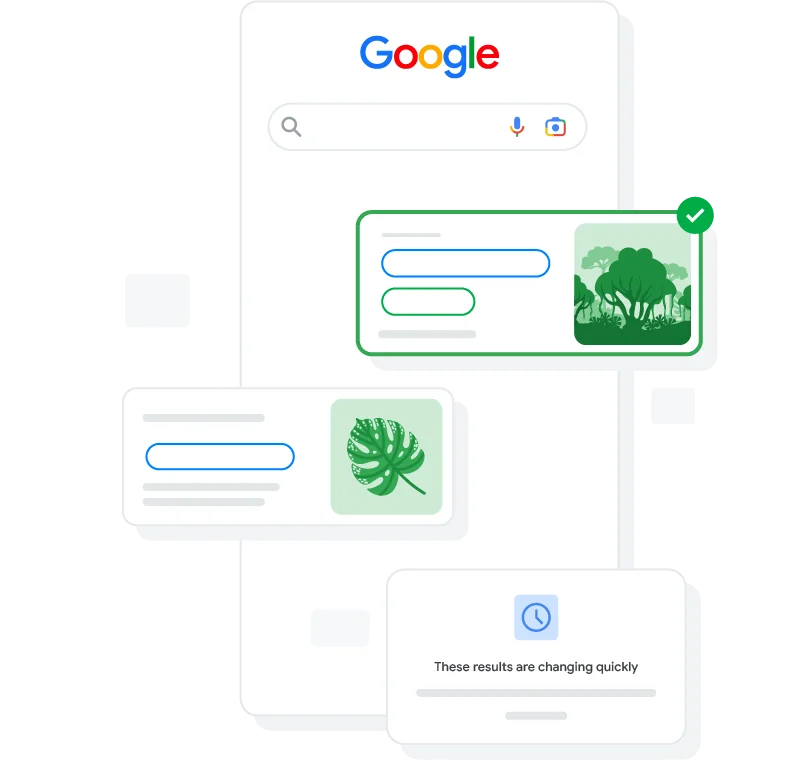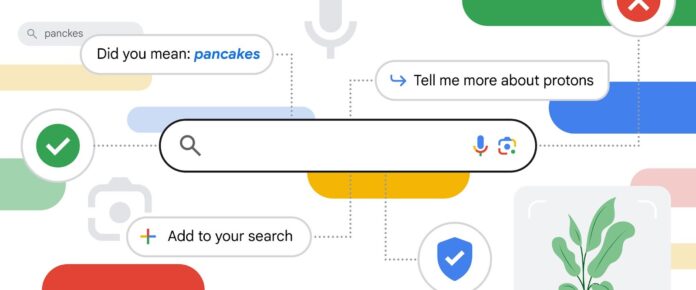Google notes that Search will never be a solved problem. Old challenges are evolving and new ones are constantly emerging as the Internet and the world are constantly changing. Therefore, the search giant have to solve many deep technical problems.
Google continues to improve Search in five main areas.
1. Ensuring quality results
It is important to rank information not only based on its relevance to your query, but also on what is likely to be useful and reliable. This is the approach that Google has emphasized from day one. The PageRank algorithm didn’t just take into account whether the words on the page matched the query. It also looked at how sites linked to each other to highlight which pages were important or authoritative.
The search giant has adapted methods over the years as the Internet has evolved and technology has improved. For example, with the spread of disinformation, the company developed ways to determine whether topics might be more susceptible to inaccurate content, such as conspiracy theories or medical misinformation, and at such times focused the rankings more on authority.

Each year, we conduct hundreds of thousands of quality assessments to ensure that we meet high standards. To continue to provide useful results, the company will regularly make key updates to the system, as well as more specialized updates, such as updating useful content.
There are aspects of information quality that continue to evolve and require new approaches. For example, one well-known challenge is information gaps, also known as data voids, where high-quality information may simply not be available.
Developers have come up with ways to show warnings when topics are evolving rapidly or when a company is not very confident in the quality of results, warning people that they should approach these results with more care. Google has also invested in other information literacy tools that help people check sources and get context to evaluate what they find.
2. Decoding meaning
Understanding information – and, in particular, understanding the meaning of people’s queries – has always been an important area of focus for Google over the years. In the beginning, the systems were mostly built on simple word matching. But this is where things like spelling became very important. Back then, if you misspelled a word, you would only find pages where the word was misspelled. So the company created the first machine learning system in Search to solve this problem.
Over the years, the systems have become much more sophisticated, better understanding synonyms and the context of words. Breakthroughs such as the Knowledge Graph have helped to understand how people, places, and things in the world are connected to each other – understanding the world more in the way that people do. So now you can find exactly what you’re looking for and even take it a step further. For example, searching for the most popular new movie and getting facts about the cast and length of the movie, as well as theaters near you and links to buy tickets.
Big language models, such as BERT, developed by Google’s research team, have helped to make huge strides in deciphering natural language queries to provide more relevant results for languages used around the world. Such models can take knowledge from one language and apply it to other languages, so you can get better results in the many languages that Search offers. This is how the team created Google Translate to help people overcome language barriers and to help them better understand information from around the world.
The latest generative artificial intelligence technology and large language models can help reimagine Search, unlock new types of questions, and change the way we organize information. Developers are currently experimenting with applying generative artificial intelligence to search through Search Labs and are rapidly updating this experience as they explore the possibilities.
3. Understanding images, videos, and more
There’s so much information in the world that isn’t text, and so many ways to ask about things without typing words into a search box.
Applying the latest developments in natural language processing (NLP), in 2008 the team launched voice search capabilities that make searching on a mobile phone more natural. Then it expanded the voice input capabilities with the “hum to search” option for when you have a tune stuck in your head but don’t know the words.
In 2015, advances in computer vision made it possible to search for what you see with the Lens. Google turned your mobile phone camera into a tool for exploring and asking questions about the world around you, so you can learn more about that flower or insect you saw while walking in your neighborhood. Today, people perform more than 12 billion visual searches every month using Lens.
Last year, the search giant launched Multisearch, which expanded on this capability by allowing you to add text to your visual searches. Now you can do things like take a picture of a sofa you like, add the word “chair,” and Google will use the image and the word to show you similar items that you can add to your living room set.
4. Detecting and fighting spam
Anyone who has ever looked into their spam email folder can appreciate all the work that goes into keeping that junk mail out of your inbox. Similarly, developers have built advanced systems to combat spam in Search. Without these advanced protections, search results would be flooded with completely irrelevant information, phishing attempts, and links to malware.
Google is constantly developing new methods and updating its ranking systems to protect against spam. But spam also adapts and evolves, requiring constant attention from development teams.
In recent years, they have applied new artificial intelligence technologies to spam detection, which has helped protect search results from spam by 99%. This remains a big area of investment for the company: as long as people turn to Google for information, spammers will try to circumvent the protection, so the company has to be vigilant and one step ahead.
5. Search is getting safer
Over the years, Google has maintained a strong commitment to inclusive access to information, helping people stay safe and in control. They strive to help people find information that is within the law, while not providing them with low-quality or harmful content that they have not asked for.
The company has done this both by expanding our privacy policy to allow people to remove sensitive personal information from results and by improving our ranking systems with safety and inclusivity in mind.
For example, developers have launched improvements to reduce the high ranking of unwanted explicit content in Search and updates to blur explicit images by default, as well as ranking enhancements to limit the reach of sites that use exploitative practices. Meanwhile, they updated the rules so that people under 18 can remove their images from Search, and launched new tools like Results with Information About You to make it easier to control how your personal information appears in search results.
Billions of people rely on Google for information, so the company is improving Search every day.









